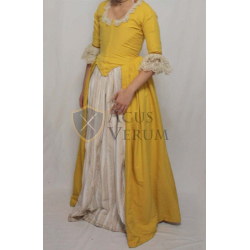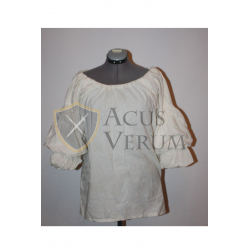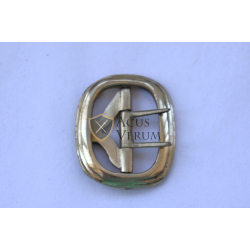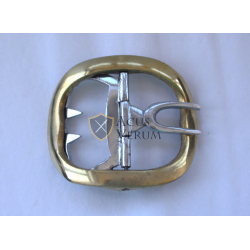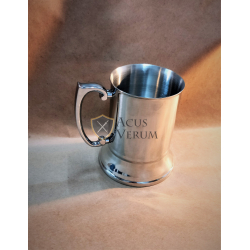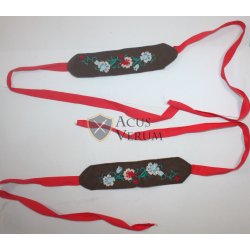18TH CENTURY
Subcategories
-
SHIRTS / SHIFT
The shift was the undermost garment worn by children and women. It served the same purpose as the man's shirt. Made from various qualities of white linen, it had either a drawstring or plain neck, as well as drawstrings or cuffs at the elbows. It could be plain or lace trimmed.
-
SKIRT
-
GOWN
Throughout the 18th century a woman's dress usually consisted of a gown and petticoat. The gown consisted of the bodice and skirt joined together, with the skirt open in the front to reveal the separate petticoat, which was an essential part of the dress and not an undergarment. (See also Petticoat and Stomacher)
-
CORSET
Stays were the essential foundation garment of the 18th century. They developed from the "boned bodies" of the 17th century, and in the 19th century were to become corsets. But just as the names of these garments changed, so did the shape and effect upon the body. The fashionable 17th century torso was an elongated tubular trunk, with little taper and encased the bosom. Through the 18th century stays covered the body with their conical form, lifting and supporting the bosom. In the 19th century corsets created a curvelinear body, minimizing the waist and accentuating the bosom. The stays of the 18th century, therefore, did much more to support the body and remind one of good posture than they did to cinch the waist. Women of the gentry and middling sorts wore stays most of the time. Children of these classes also wore stays to learn proper carriage. While fashionable ladies' stays were wanted for a good shape, working women needed them for good support. All women were admonished by their contemporaries to not tightly lace or "straight" lace their stays out of concern
 for possible injury. Those who did so out of vanity were mocked by the satirical print to the right, entitled, "Tight Lacing or Fashion before Ease." The extent to which stays were worn by slaves is unclear. Plantation records do not indicate the use of stays in the yearly allotment to field slaves. That some slaves, particularly house slaves, did wear stays is proven by the many descriptions in runaway ads. As the sorts of women who wore stays varied greatly, so did the types and quality of the garments themselves. Frequently constructed in layers of linen with narrow strips of boning inserted within, stays could vary from perfectly rigid to very pliable. Boning was either baleen, metal, wood, pasteboard, or pack thread. Their exteriors could be covered in fine silks, utilitarian worsteds, or plain linens. Perhaps the lowest sort of stays were those given by church charity, generally made in a single layer of thick leather.
for possible injury. Those who did so out of vanity were mocked by the satirical print to the right, entitled, "Tight Lacing or Fashion before Ease." The extent to which stays were worn by slaves is unclear. Plantation records do not indicate the use of stays in the yearly allotment to field slaves. That some slaves, particularly house slaves, did wear stays is proven by the many descriptions in runaway ads. As the sorts of women who wore stays varied greatly, so did the types and quality of the garments themselves. Frequently constructed in layers of linen with narrow strips of boning inserted within, stays could vary from perfectly rigid to very pliable. Boning was either baleen, metal, wood, pasteboard, or pack thread. Their exteriors could be covered in fine silks, utilitarian worsteds, or plain linens. Perhaps the lowest sort of stays were those given by church charity, generally made in a single layer of thick leather. -
ACCESORIES


